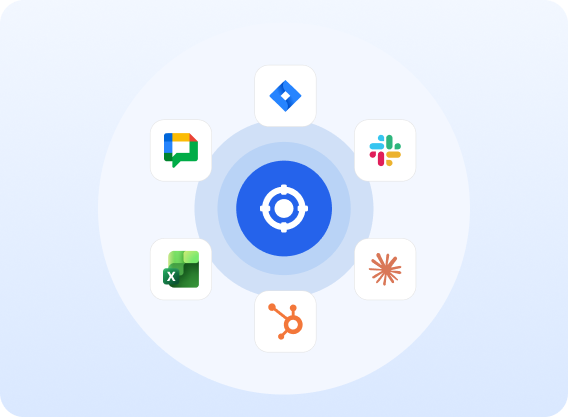Measurement is the first step that leads to control and eventually to improvement. If you can’t measure something, you can’t understand it. If you can’t understand it, you can’t control it. If you can’t control it, you can’t improve it.
What are SaaS (software-as-a-service) Metrics?
SaaS metrics are standards that businesses or companies monitor to ensure steady growth. Much like the regular KPIs, SaaS metrics assist in measuring the success to prepare for future growth. Market giants like Marketo and Salesforce highlighted the benefits of key SaaS metrics by demonstrating steady, continuous growth.Importance of SaaS Metrics
For SaaS companies, the primary goal is to ensure future growth through effective business strategies. E-commerce companies depend on immediate sales to sustain their business. SaaS companies are different because they rely on the whole customer lifecycle. As explained in SaaS metrics 2.0, retaining customers directly impacts financial growth and stability. They benefit more by nurturing long-term relationships with customers as the recurrent revenue ensures continuous development. SaaS metrics also assist in developing and modifying business strategies, minimizing future risk, and boosting growth. Tracking metrics is an important part of ensuring your short- and long-term business health. An OKR management platform such as Profit.co can help you transparently track your most important metrics and KPIs. You can get started on Profit.co completely free today!The Top 5 Saas Metrics to Measure and Improve
The most critical SaaS metrics focus on three essential aspects: customer success, sales, and marketing. These aspects complement each other and, therefore, must work together. SaaS companies should leverage the power of these three components. They need to determine the level of efficiency of each element, which is where key SaaS metrics come in. The metrics are guidelines that companies adopt to ensure success and sustainability.Conversion Rate
The conversion rate determines how effective your marketing strategies are. It shows how many website visitors you convert to paying customers. Your conversion rate determines whether your methods of nurturing leads and your sales processes are effective.Conversion Rate Formula
You can easily calculate the conversion rate through:
For instance, if you have 5000 website visitors in a week and you generate 500 orders, your conversion rate will be: 500/5000 X 100 = 10%
How to Boost Your Conversion Rate
- Conduct A/B tests on your website to determine which CTAs, colors, headlines, and layouts your visitors prefer.
- Market the unique qualities your product or service offers
- Publish case studies and use cases of your product
- Shorten online forms and strengthen your CTAs
- Optimize your website for mobile and enhance the loading speed
Churn Rate or Customer Attrition
The churn rate refers to the percentage of customers who downgrade or stop using your product or service after signing up. In the SaaS sector, retaining customers for longer durations affects your business’ profitability. Low churn rates are acceptable, and they serve as reminders to put more effort into maintaining existing customers and attracting new ones. For SaaS companies, the ideal churn rate is between 5-7% annually, or 0.42-0.58% per month.Churn Rate Formula
To calculate your churn rate, determine the number of customers who sign up in a certain period and leave during the same period.How to Improve SaaS Churn Rate
- Request feedback from customers who leave and leverage it to enhance your product or service
- Determine the particular features that the leaving customers find in competitors
- Ensure to add value to your customers and meet their expectations
- Increase the revenue you generate to surpass the amount you anticipate to lose
- Upsell and cross-sell your products to existing customers and offer incentives to retain them
Customer Lifetime Value (CLV or LTV)
Customer lifetime value is the total revenue your business generates or expects to generate from a customer over the lifetime of their account. It provides an approximate value of your average customer. Most SaaS companies utilize subscription-based models. Every renewal leads to recurrent revenue, which increases the lifetime value of each customer.Customer Lifetime Value Formula
CLV calculation is not straightforward, so you’ll need to know your average revenue per account and churn rate.How to Boost CLV
- Motivate your customers towards annual billing.
- Ensure you upsell related products and services to all customers
- Encourage repeat purchases
- Add value to your product to stay ahead of the competition
Monthly Recurring Revenue (MRR)
MRR is among the most critical SaaS metrics and KPIs as it shows how much you generate from customers in a month. It helps to accurately predict the income from various revenue streams such as subscription renewals and upgrades. With MRR, it’s easy to measure the success level of every revenue stream. You can determine whether the revenue comes from new sales or existing customers.MRR Formula
To simplify calculations, all paying customers are part of the MRR. You can get an accurate MRR by multiplying the paying customers by the ARPU (Average Revenue per User).Calculating the Net New MRR
The net new MRR refers to the Total MRR, which is the churn MRR and the add-on MRR in a month. You’ll use this formula:- Add-on MRR or expansion MRR is the revenue from existing customers upgrading their plans, add-ons, cross-sells, and up-sells.
- Churn MRR is the revenue lost when customers cancel or downgrade their plans.
- New MRR is revenue from new customers only.
How to Improve your MRR
- Boost the number of new customers per month
- Minimize your churn rates
- Build value in your products or services by addressing the customers’ pain points
Customer Acquisition Cost (CAC)
Customer acquisition cost determines the exact cost of acquiring new customers and their value to the business. If you combine CAC and CLV, you can see the viability of your business model.Customer Acquisition Cost Formula CAC helps to develop cost-effective acquisition strategies. You can use the formula:
How to Improve CAC
- Enhance your website design and optimize it for mobile platforms
- Highlight the value of your product or service to customers
- Lower the amount you spend on ads
- Increase the organic traffic to your website
- Adjust your pricing plans




